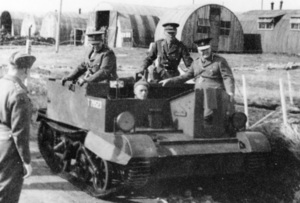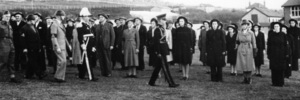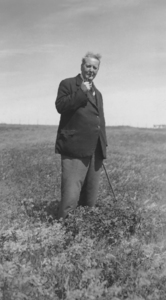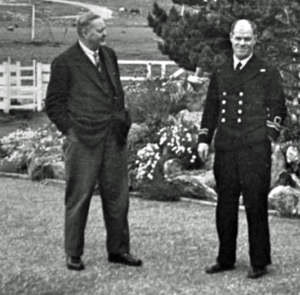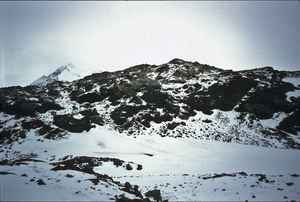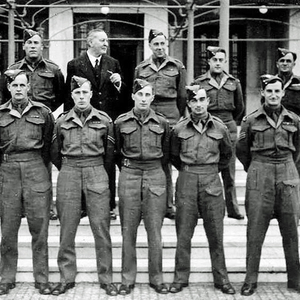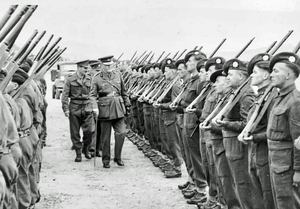CARDINALL, Sir ALLAN WOLSEY
1887 - 1956 from England
governor, was born at Ardleigh near Colchester, Essex on 21 March 1887, the third son of Durrant Edward Cardinall and Norah Louise of Tendring in the north-east of the county where the Cardinalls were a long-established landed family.
He was educated at Winchester and at the University of Heidelberg in Germany and then taught in preparatory schools in British Columbia and in England; during his time in Canada he also worked briefly as a journalist with the Vancouver News Advertiser. In 1914 he joined the West African Administrative Service, as it then was, spending eighteen years in the Gold Coast {Ghana}; most of his service was up-country in Ashanti, the Northern Territories and that part of the former German colony of Togoland which was governed by Britain under a League of Nations mandate.
His African experiences led to several books, Natives of the Northern Territories of the Gold Coast (1920), In Ashanti and Beyond (1927), Tales Told in Togoland (1931), The Gold Coast (1931, 1933), A Bibliography of the Gold Coast (1933) and A Gold Coast Library (1954). Like so many colonial administrators he developed an interest in anthropology and gave several artefacts to the Pitt-Rivers Museum at Oxford.He retired from the West African service in 1932 and went on to represent Great Britain at the League of Nations on behalf of the Togoland mandate in 1932 and 1933. This was followed by a move to the Colonial Service mainstream when he was appointed commissioner of the Cayman Islands, then a dependency of Jamaica, in 1934. Like so many of the smaller British island territories the Caymans were a backwater, dependent on shipbuilding, fishing and farming and a far cry from the offshore banking and tourist centre of today. Cardinall's term of office began when the islands were still recovering from the effects of a hurricane in 1932 and economic depression was widespread all over the Western world. There were no roads; access to most places was by boat, on foot or on horseback. Cardinall's first step was to improve external communications by encouraging the opening of a wireless station; this was done by the Cuban government in George Town in 1935, originally to monitor the weather, and it was followed by the establishment of a station on Cayman Brac. In 1935, too, he was responsible for the first roadbuilding programme in the islands, even surveying some of the planned lines of route himself. One cattle trail in George Town itself is now one of the main streets of the capital and bears his name, Cardinall Avenue. He was also ahead of his time in seeing the potential of tourism, founding the Chamber of Commerce, a regatta and a yacht club in 1935 and arranging for the first visit of a cruise liner in 1937. Steps were taken to promote such local industries as shark fishing and tanning and a small hospital was built along with a library and a post office. It is fair to say that the present prosperity of the Cayman Islands owes a great deal to the foundations laid by Allan Cardinall in the 1930s; a recent historian, Michael Craton, describes him as among 'the most capable, eloquent and vigorous of all Cayman's Commissioners'.
In 1940 Cardinall was transferred to the Falklands as colonial secretary and when Sir Herbert HENNIKER HEATON left the following year he replaced him as governor.
He was in office for the rest of World War II; from 1942 a large garrison, officially designated Force 132, was stationed in the Islands because of fear of a Japanese attack across the Pacific and it remained there until 1944. A military force of 1700 men encamped on the outskirts of Stanley and without the threat of imminent hostilities to concentrate the mind was obviously a potential source of problems but there were no serious incidents.
At the end of 1941 Cardinall had to order the evacuation of most of the children from Stanley to the camp; the excuse was the Japanese threat following Pearl Harbour but the real reason appears to have been the need to provide billets for the advance units of the garrison. The children returned in October 1942.
Cardinall's watch also saw Operation Tabarin*, forerunner of the Falkland Islands Dependencies Survey (now the British Antarctic Survey) launched in 1943. Tabarin in turn stemmed from action taken to prevent enemy warships using harbours in the Falkland Islands Dependencies and to monitor the Antarctic ambitions of Argentina and Chile; several scientific bases were established and Cardinall and David ROBERTS, the FIC colonial manager, took a considerable risk in sending the Company's steamer Fitzroy to accompany RRS William Scoresby to the Antarctic. The Fitzroy was the Falklands' only link with the outside world and was neither designed nor insured to go into Antarctic waters; the secrecy of the project meant that neither the insurers nor the Company's headquarters in London could be informed. Fortunately Fitzroy returned safely. Cardinall's support of the operation is commemorated in Mount Cardinall in Graham Land (the Antarctic Peninsula).
He had moved to another remote island colony with economic problems but those of the Falklands were very different from those he had faced and tackled in the Caymans. The problems here stemmed from an agriculture which was almost exclusively based on sheep ranching carried out in very large units, most of which were owned by absentee landlords, above all the Falkland Islands Company. Some governors, especially ALLARDYCE and MIDDLETON, had attempted to introduce new thinking but there was never any degree of continuity between the term of one governor and that of his successor. In 1937 Governor Henniker-Heaton, with the support of some of the more progressive farm managers, had invited the grassland expert William DAVIES of Aberystwyth to report on the grasslands and Davies was not impressed by what he found; he felt that the existing position was beyond improvement and he recommended the breakup of the existing pattern of large ranches and its replacement by 6000 acre paddocks. Despite the support of the governor, Davies's proposals were not implemented; this was due in part to the outbreak of war but also to the conservatism and sometimes the outright hostility of the farming community.
Cardinall set about preparing a development plan for the Falklands for the next fifty years; this was contained in a 75-page despatch sent to the Colonial Office and dated 22 February 1942. One must marvel at his audacity in preparing such a plan for one of the most remote British territories with a population of only 2000 during a world war and in a year which would see the collapse of the British Empire in the Far East. In his despatch Cardinall argued that the 6000 acre holdings proposed by Davies were too small for ranching and too large for conventional farming. Ranching and the consequent over-grazing of unmanaged grassland, coupled with the conservatism of many of the men on the spot, were the causes of environmental deterioration.
The farming companies, answerable to shareholders in London, and the Falkland Islands Company were among the main factors holding back any attempts at development; one of the greatest mistakes had been the closure by Governor HODSON of the experimental farm established by Governor Middleton. Cardinall was equally critical of the failure of the Colonial Office to challenge local vested interests and his proposals show that he had studied contemporary ideas and practice in Denmark with the emphasis on cooperatives.
His suggestions for agrarian reform involved a level of social and economic change which, in the Falklands context, can only be described as revolutionary. He advocated the breakup of the existing farms and their replacement by smaller units held on cooperative tenancies on the Danish model. He saw the need to keep more intelligent and enterprising young people on the land and to train them to see farming as a satisfying and fulfilling life; to that end he proposed to re-establish the experimental farm (at Albemarle rather than on its original site at Green Patch) alongside a new agricultural high school. This would be attended by boys between the ages of 14 and 19; they would then be employed on farms as skilled agricultural workers until they were 35 when they would move on to their own smallholdings. They idea was to give workers, especially in the Camp, a stake in the community and in the long term to create a contented and prosperous rural society of yeoman farmers.
The plan also dealt with infrastructure. There were no roads outside Stanley and its immediate vicinity and Cardinall proposed an east-west highway across East Falkland. An inter-island shipping service and a ferry across the Sound would end dependence on FIC shipping and also, it was hoped, reduce the risk of rural depopulation by making Stanley more accessible to Camp residents. A local air service had been suggested before the war and had been rejected on grounds of cost but Cardinall revived the idea. Diversification based on other natural resources was mentioned and the presence of oil and its future exploitation could not be ruled out.
A more representative form of government was needed (it is worth remembering that no Falkland Islander had a vote until after World War II) and Cardinall also suggested the possibility of full integration with the United Kingdom, with the Islands becoming an English county. The cost of these proposals was estimated at about £500,000 to be funded by Colonial Development loans and tax increases; the despatch also stressed that continuity of policy was essential and, by implication, that the implementation of such a plan could not be allowed to depend on the whim of individual governors.
The plan was not received with great enthusiasm by the Colonial Office. Colonies, especially the smaller ones, were expected to pay their way and not to demand large capital sums by way of investment. One comment described Cardinall's proposals as 'a Scandinavian-style socialist utopian dream' and he himself admitted that his plan was 'a vast gamble'. To be fair to the Colonial Office there was a world war in progress and officials were already aware that far-reaching decisions about the future of many colonies would have to be taken after the end of hostilities; compared with many colonies, the Falklands really were a very small problem. The experimental farm was approved and some funds were made available but the nettle of land reform was not grasped and neither the Falkland Islands Company nor the farming interests were confronted.
The price for London's failure to respond to Cardinall's 1942 despatch was paid in later years. On the other hand, some of his ideas were implemented by his successor Miles CLIFFORD who received the credit. The despatch and the accompanying file disappeared from public view until their release in 1972. It is interesting that much of what Cardinall had proposed was included in the Shackleton Reports of 1976 and 1982 and has by now come to pass, although Lord SHACKLETON had never seen the despatch; this indicates how perceptive Cardinall was.
Sir Allan Cardinall (he was made KBE in 1943, having been awarded the CMG in 1937) left the Falklands in 1946 and retired to Romsey in Hampshire. He never married. His last years were overshadowed by ill health and he died on 26 January 1956 at the age of 68; not long before his death he was received into the Roman Catholic church.
If Cardinall's plans could have been implemented he might have been remembered as one of the outstanding governors; it was his misfortune to be in office during the more difficult years of the twentieth century. He comes over as a man of great intelligence and vision, too intelligent and dynamic, perhaps, for the time and place in which he found himself. This author's father, who worked closely with him, certainly had a great respect for him.
External links
See: The natives of the Northern Territories of the Gold Coast
See: National Archives Kew - Scheme for the development of the Colony 1942
References
Allan Cardinall The Natives of the Northern territories of the Gold Coast; 1920.
Allan Cardinall; A Gold Coast Library; 1924.Allan Cardinall; In Ashanti and Beyond; 1927.
Allan Cardinall; A Bibliography of the Gold Coast; 1931.
Allan Cardinall; Tales told in Togoland; 1931.
Allan Cardinall; The Gold Coast in 1931; 1932
Allan Cardinall; Scheme for the development of the Colony; CO/78/216/8; Colonial Office Records; National Archives, Kew
Comments
Gill Trayner
2018-05-21 17:15:47 UTC
I read this story about my great uncle Dick (as Sir Alan Cardinall was known within the family) with mounting pride and by the time I got to the end I felt most tearful!
I have always felt that if there had been more administrators like uncle Dick in the Colonies, then the world would have been a better place today and Britain would be held in higher regard.
Thank you Mr Carr for your kind words about a wonderful man - I have been to George Town in the Cayman Islands and also to Stanley (both times admittedly passing through on cruise ships, but, because I pre-arranged my visits with people there, I saw more than most day tourists and learned more about my uncle).
I believe that uncle Dick's batman from the Cayman Islands very kindly came over to England to look after him in his final illness. By that time my parents, along with me and my young sister, were living in Kenya, then a British colony.
Best wishes and thanks,
Gill Trayner
Gill Trayner
2019-05-21 12:43:48 UTC
A lovely picture of Uncle Dick has just been added............by, it says, the Gibbs family. Do they have any other pictures of him or any anedotes? I wonder - for family records. I can certainly see the family resemblance - my father J.K. Nye, county cricketer (Obituary in Wisden 2003) and Kenya roadmaker was SO like him - in many ways apart from the physical resemblance.
A huge thank you to whoever put this in.
Gill Trayner
Revisions
Photograph added May 2019
November 2019 Seven references added; two external links added; one additional photograph added
January 2020 One additional photograph added
March 2020 Two additional photographs added
May 2021 One additional photograph added
